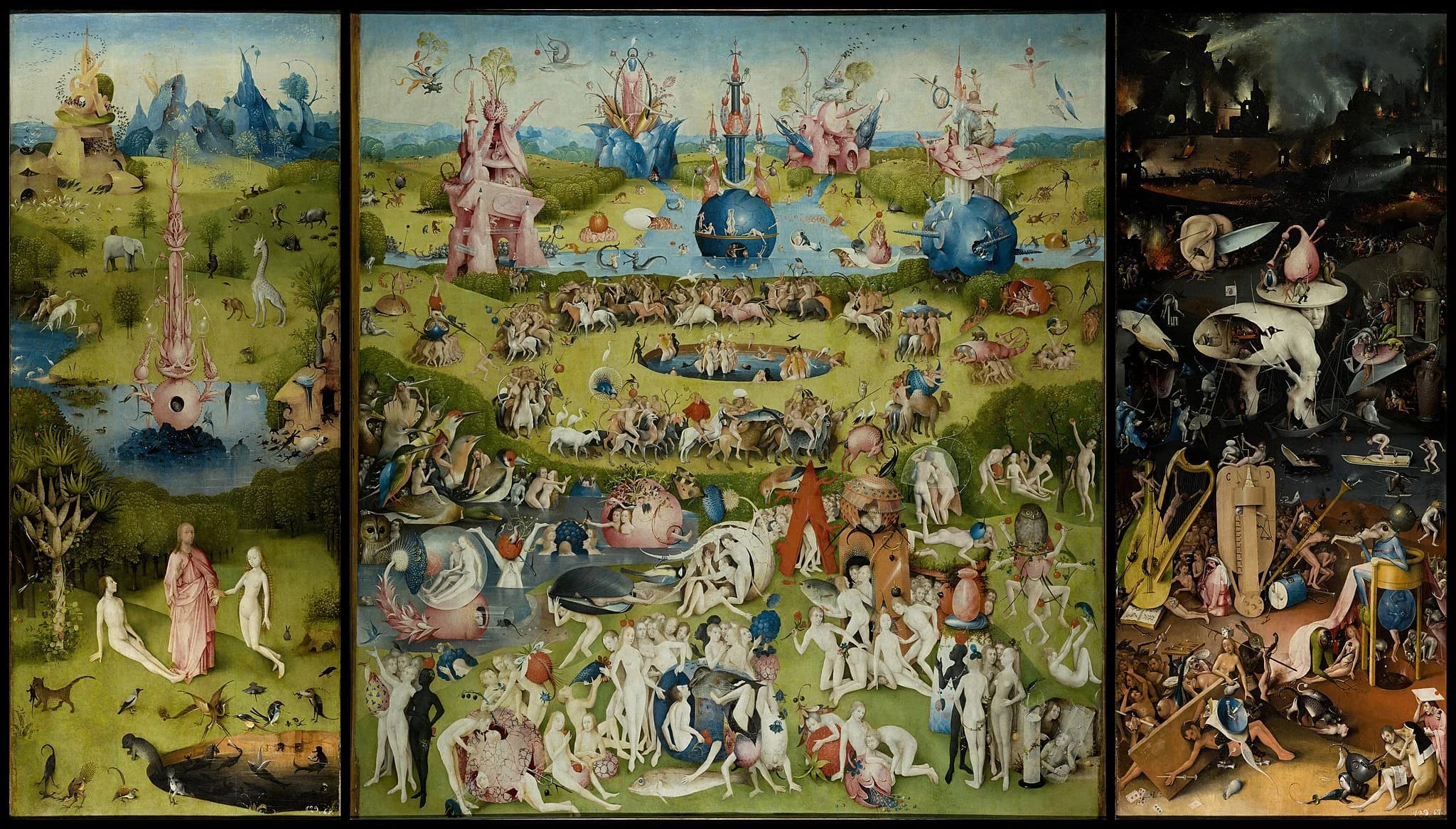About Notes on Becoming
I write to reconnect with the inner world, entertain thought, and find meaning where I feel like it's lost to modern life. This blog isn’t another self-help cult, lifestyle blog, or new-age mambo jumbo vlog. It’s where I share what I’m uncovering about becoming whole — for those who feel disconnected, question more than they’re told, and want something deeper than what modern life usually offers. Live Example:
Hieronymus Bosch, The Garden of Earthly Delights

Hieronymus Bosch: The Artist Behind the Vision
Hieronymus Bosch was a Dutch painter born around 1450 in ‘s-Hertogenbosch, where he spent his entire career. Raised in a family of artists, he grew up in a creative workshop environment and married into local wealth. As a member of the city’s elite religious brotherhood, Bosch painted mostly for prosperous citizens and religious groups, though no famous patrons are known. His life was rooted in his hometown, his art shaped by both his family legacy and the religious culture of his era.
Bosch lived during an era marked by intense religious anxiety, with widespread fears of hell, sin, the apocalypse and moral decay. The Catholic Church shaped nearly every aspect of daily life, but it was also a period of social upheaval and the rise of heretical movements. Many of Bosch’s images reflect not only this religious context, but also local folklore, morality plays, sermons and a cultural fascination with the grotesque and fantastic. His art is renowned for its bizarre, nightmarish, and often darkly humorous visions, filled with monsters, hybrids, and impossible landscapes. Despite the strange and unsettling nature of his paintings, there is no evidence that Bosch himself was mad or mentally ill—his reputation as an outsider is largely a modern invention. Some scholars argue that his fantastic imagery was meant to serve as a moral warning against sin and temptation, while others interpret it as the work of a uniquely creative, and possibly troubled, imagination.
Read More ...Reach out
I’ll be posting bi-weekly on Sundays (generally speaking — don’t pin me down on this). Got ideas or requests? I’m always open to what my audience wants to explore, feel free to reach out down below.